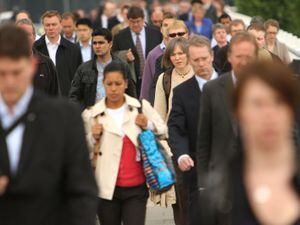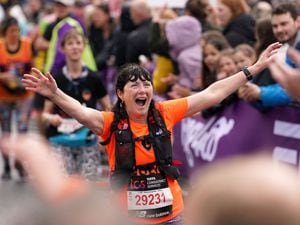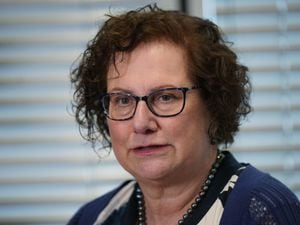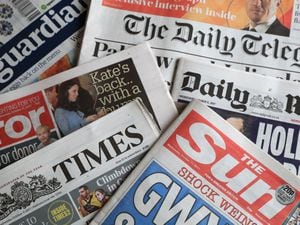Key census statistics on religion, ethnicity and language in England and Wales
Caerphilly in Wales is the area with the highest proportion of people reporting no religion.

Here are the key statistics in today’s release of 2021 census data on religion, ethnicity and language in England and Wales.
Religion
– Some 27.5 million people in England and Wales described themselves as Christian on the day of the 2021 census, or 46.2%. This is down from 33.3 million (59.3%) a decade earlier and is the first time the proportion has dropped below a half.
– The percentage of people saying they had no religion jumped from around a quarter in 2011 (25.2%, or 14.1 million) to over a third in 2021 (37.2% or 22.2 million).
– The proportion of people describing themselves as Muslim rose from 4.9% (2.7 million) to 6.5% (3.9 million), Hindu from 1.5% (818,000 people) to 1.7% (1.0 million) and Sikh from 0.8% (423,000) to 0.9% (524,000), while Jewish remained broadly unchanged at 0.5% in both 2011 (265,000 people) and 2021 (271,000).
– London remains the most religiously diverse region of England, with just over a quarter (25.3%) of usual residents on the day of the 2021 census reporting a religion other than Christian, up from 22.6% in 2011.
– South west England is the least religiously diverse region, with 3.2% selecting a religion other than Christian.
– The local authority in England with the highest percentage of people reporting their religion as Christian in 2021 was Knowsley (66.6%) while in Wales it was the Isle of Anglesey and Flintshire (both 51.5%).
– The areas with the highest percentage of people reporting no religion were Caerphilly for Wales (56.7%) and Brighton & Hove for England (55.2%)
– Some 0.7% of people in England and Wales (405,000) chose to write in the name of a religion that was not listed as one of the main choices. Among these, 74,000 people wrote pagan, 26,000 Alevi, 25,000 Jain and 13,000 Wicca. The largest increase was seen in those describing their religion as shamanism, up from 650 in 2011 to 8,000 in 2021.
Ethnicity
– Some 81.7% (48.7 million) of the population of England and Wales identified as white in the 2021 census, down from 86.0% (48.2 million) in 2011.
– Within the group identifying as white, 74.4% said they were “English, Welsh, Scottish, Northern Irish or British”, down from 80.5% in 2011 and 87.5% in 2001.
– The proportion of people identifying as Asian rose from 7.5% (4.2 million) in 2011 to 9.3% (5.5 million) in 2021; people identifying as black rose from 3.3% (1.9 million) to 4.0% (2.4 million); mixed or multiple ethnic groups rose from 2.2% (1.2 million) to 2.9% (1.7 million); and other groups rose from 1.0% (564,000) to 2.1% (1.3 million).
– London remains the most ethnically diverse region of England, with 36.8% of people identifying as “white English, Welsh, Scottish, Northern Irish or British”, down from 44.9% in 2011.
– The region with the highest proportion of people identifying this way was north east England, at 90.6%.
– The local authorities with the highest proportion of people in 2021 identifying as “white English, Welsh, Scottish, Northern Irish or British” were Allerdale and Copeland in Cumbria (both 96.7%), while the lowest were the London boroughs of Newham (14.8%) and Brent (15.2%).
– In 10.1% of households in England and Wales in 2021, two or more ethnic groups were represented, up from 8.7% in 2011.
Language
– A total of 91.1% of residents had English as a main language on the day of the 2021 census (including English or Welsh in Wales), down slightly from 92.3% a decade earlier.
– A further 7.1% of people were proficient in English, speaking it “well” or “very well”, but did not speak it as their main language.
– The most common main languages in 2021 other than English were Polish (1.1% of the population), Romanian (0.8%), Panjabi (0.5%) and Urdu (0.5%).
– Romanian moved into the top 10 main languages other than English in 2021 and also saw the largest increase over the decade, up from 0.1% (68,000 people) in 2011 to 0.8% (472,000).
– The region with the highest percentage of people who reported Romanian as a main language was London (1.9%, or 159,000 people), rising to 7.5% in the borough of Harrow.
– The East Midlands was the region with the highest percentage of people who had Polish as a main language (1.5%, or 71,000), rising to 5.7% in the local authority of Boston in Lincolnshire.
– Wolverhampton was the local authority with the largest percentage of people with Panjabi as a main language (6.5%, or 17,000), while Slough had the largest proportion of people with Urdu as a main language (4.3%, or 7,000).





